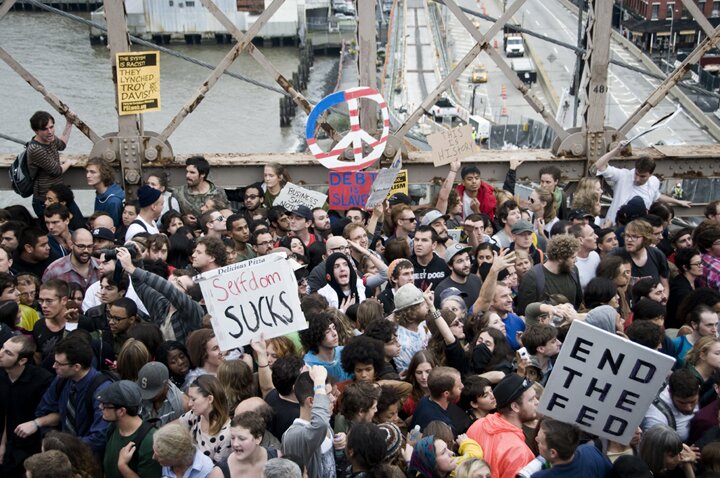“Mic check!”
General assembly, sparkly hands, consensus, concern, temperature check, block, process: this is the vocabulary and embodied performance of occupy theory. Each word has an equivalent embodied gesture, which is the means of indicating how you’re feeling about a proposal: fingers up for feeling good, horizontal for not sure, down for against.
The strongest sign is raised, crossed arms for a b
lock: an ethical or safety concern over a proposal that might cause you to leave the movement. Proposals are “consens-ed” by facilitators so that a clear majority approve. It’s not always quick but it is always interesting. It’s occupy theory.
Don’t make the phrase into a noun: it’s not a theory of occupation. Occupy theory is what you do as you occupy. It is the process that has become in some sense the purpose of the direct democracy movement, known by its signature instance Occupy Wall Street, or #ows.
Add a comment